How Painkillers Are Turning Young Athletes Into Heroin Addicts

This story appears in the June 22, 2015, issue of Sports Illustrated. Subscribe to the magazine here.
Roman Montano had barely learned cursive when he was asked to sign his first baseball. Parents of teammates had watched him dominate game after game in Albuquerque's Little League during the summer of 2000, mowing down batters and belting home runs. The autograph requests were mostly facetious, but what they signified was clear: The kid was going somewhere.
The next few years only confirmed that notion. Roman grew to 6'6" and 250 pounds. He made a mockery of the weight room at Eldorado High and ran the 40-yard dash in 4.9. As a sophomore defensive lineman he was honorable mention all-state in Class 5A. He also joined the basketball team his senior year, giving in to the pleadings of the coach, and was instantly the Eagles' best player. And after high school, when he trained with the legion of MMA fighters based in Albuquerque, they encouraged him to compete as a heavyweight.
Baseball, though, was always his favorite sport—"the most funnest," as he had put it to the Albuquerque Tribune when he was 12. He once struck out all 18 batters in a Thunderbird League game. The towering righty was Eldorado High's ace, his fastball reaching the 90s. The second starter? Ken Giles, now a flame-throwing Phillies reliever. "You're talking about a guy with a ton of potential: size, natural ability, attitude," Giles says. "Everyone wanted to be him, but everyone wanted to be around him, too. The first word I would use to describe Roman is lovable."

A foot injury his junior year didn't derail Roman. He needed minor surgery on a small bone, but he popped some OxyContin and after a few weeks was back on the mound. His senior year Roman planned to lead Eldorado to a state title and then declare for the 2008 major league draft (the Braves had expressed the most interest in him), spurning about 20 Division I scholarship offers. Before the season, though, Roman committed one of those judgment-deprived acts for which teenagers are known. He and some friends used a stolen credit card at a mall. They got caught. The school found out. Though it was Roman's first offense, he was kicked off the team.
Humiliated, angry and depressed, Roman thought back to the numbing effect of the OxyContin. His prescription had run out, but that wasn't much of an impediment. In the upscale Northeast Heights—more High School Musical Albuquerque than Breaking Bad Albuquerque—painkillers were competing with marijuana and alcohol as the party drug of choice. "There are pill parties," says Roman's younger brother, Beau. "[Pills are] so easy to get. They're everywhere."
Roman was soon in the grip of Oxy. He lost interest in baseball. He showed up high for graduation. JoAnn Montano and her husband, Bo, who owns a wheel-alignment and body-shop business, figured their son was just floundering—until JoAnn caught him using. She took him to an addiction center, and he was prescribed Suboxone to treat his opioid dependency.
Roman, though, couldn't fully kick his habit. Before graduation he had switched to a cheaper substance that offered the same high at a lower price: heroin.
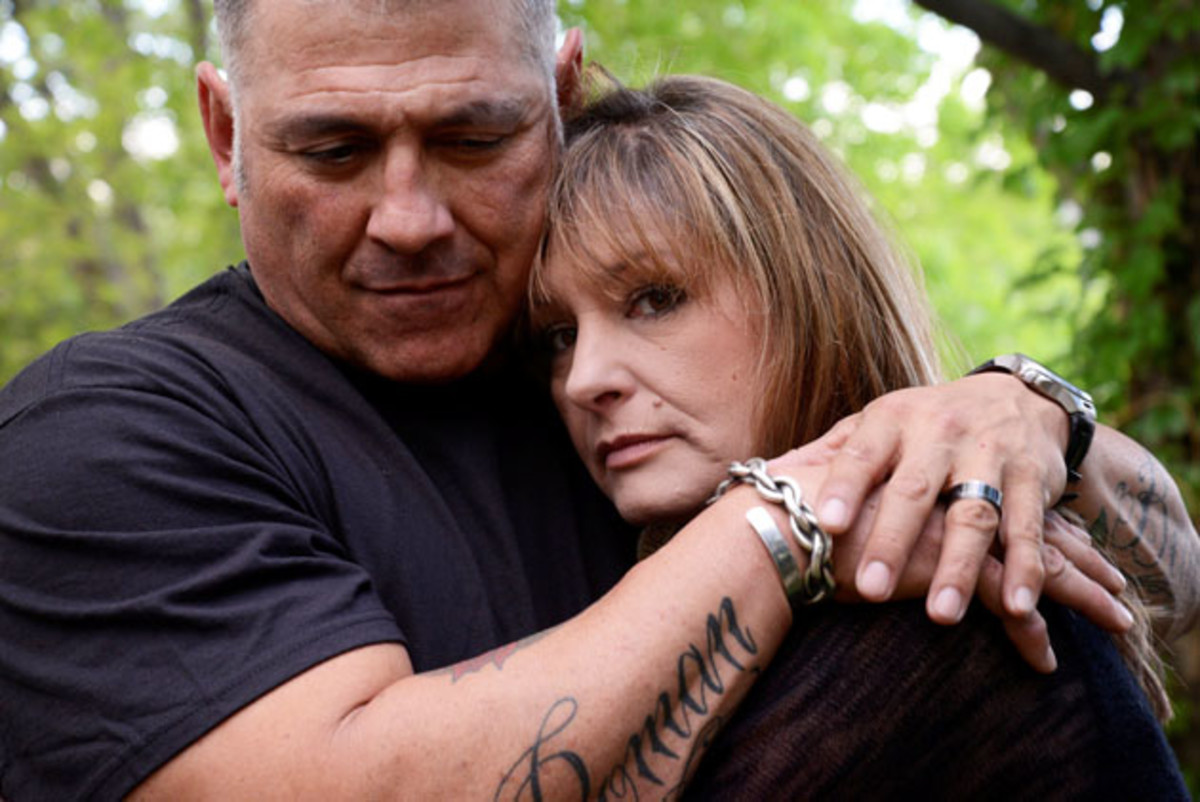
At first Roman smoked "black" (black-tar heroin), a relatively crude version of the drug that was easy to obtain. Then he began using intravenously. But he hid his addiction well. He stayed on Suboxone, took up competitive bodybuilding and started training at an MMA gym. He had a job selling phones for Verizon. "He looked so healthy, a big, strapping guy, not like a junkie," says Bo. "He was back doing his athletics. We thought the addiction was behind us. We didn't know how cunning and how manipulative this drug is."
On May 2, 2012, Roman was supposed to lift weights with his father in the morning. Roman didn't show up, and texts to him went unanswered. His fiancée, Mikaila Lovato, couldn't find him either.
In the evening two chaplains went to the Montanos' house, asking for Roman's next of kin. They said that Roman had been found slumped in the driver's seat of his car behind a FedEx store, a syringe in his arm, the motor running. He was 22 and dead from a heroin overdose.
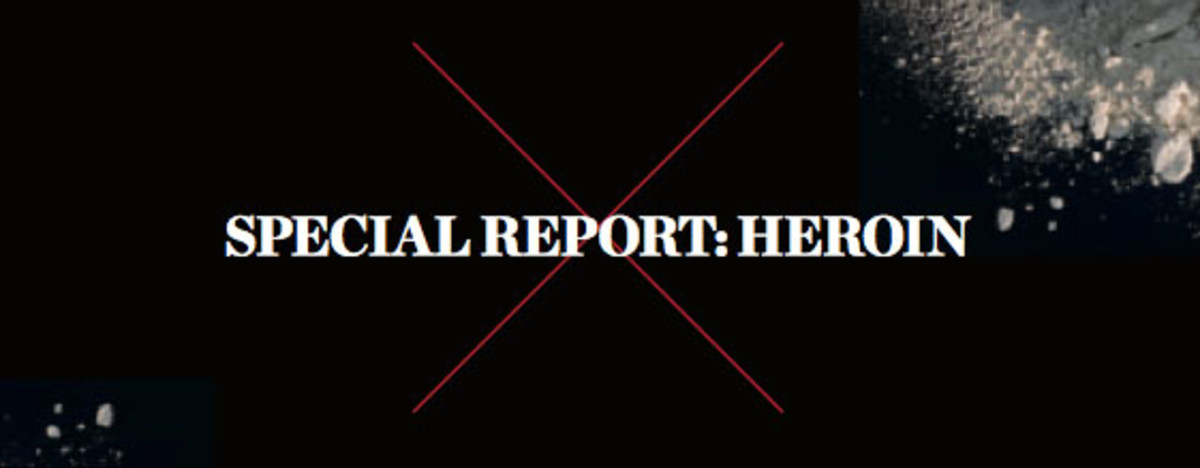
It is, by any measure, an epidemic. Heroin is not new or chic, but its use and abuse are spiking. According to data from the U.S. Centers for Disease Control and Prevention and the National Center for Health Statistics, heroin-overdose deaths rose gradually from 2000 to '10 but then almost tripled in the following three years to 2.7 deaths per 100,000 people. Heroin use cuts across demographics. Young, old. Male, female. Wealthy, indigent. Urban, rural and, most of all, suburban. But public authorities devoted to prevention and law enforcement, from the Drug Enforcement Agency (DEA) to the Centers for Disease Control (CDC), have been struck by a growing concentration in an unlikely subset of users: young athletes.
About a decade ago Jack Riley, the DEA's chief of operations, recognized that high school athletes were becoming "unwitting customers of the cartels," which target people susceptible to prescription-drug abuse. The number of addicts and overdose victims has grown substantially since then. "In the athletic arena, if anything can be likened to a weapon of mass destruction, it's heroin," Riley says. "It is that pervasive now."
While hard data for heroin use among young athletes are difficult to come by, the anecdotal evidence is abundant and alarming. A seven-month SI investigation found overdose victims in baseball, basketball, football, golf, gymnastics, hockey, lacrosse, soccer, softball, swimming, tennis, volleyball and wrestling—from coast to coast. Riley saw this as a volunteer in a youth basketball league in St. Louis. He coached a player who, years after suffering an injury, succumbed to a heroin overdose. The cartels, Riley says, "have developed a strategy, with the help of street gangs, to put heroin in every walk of life. They recognize how vulnerable young athletes are."
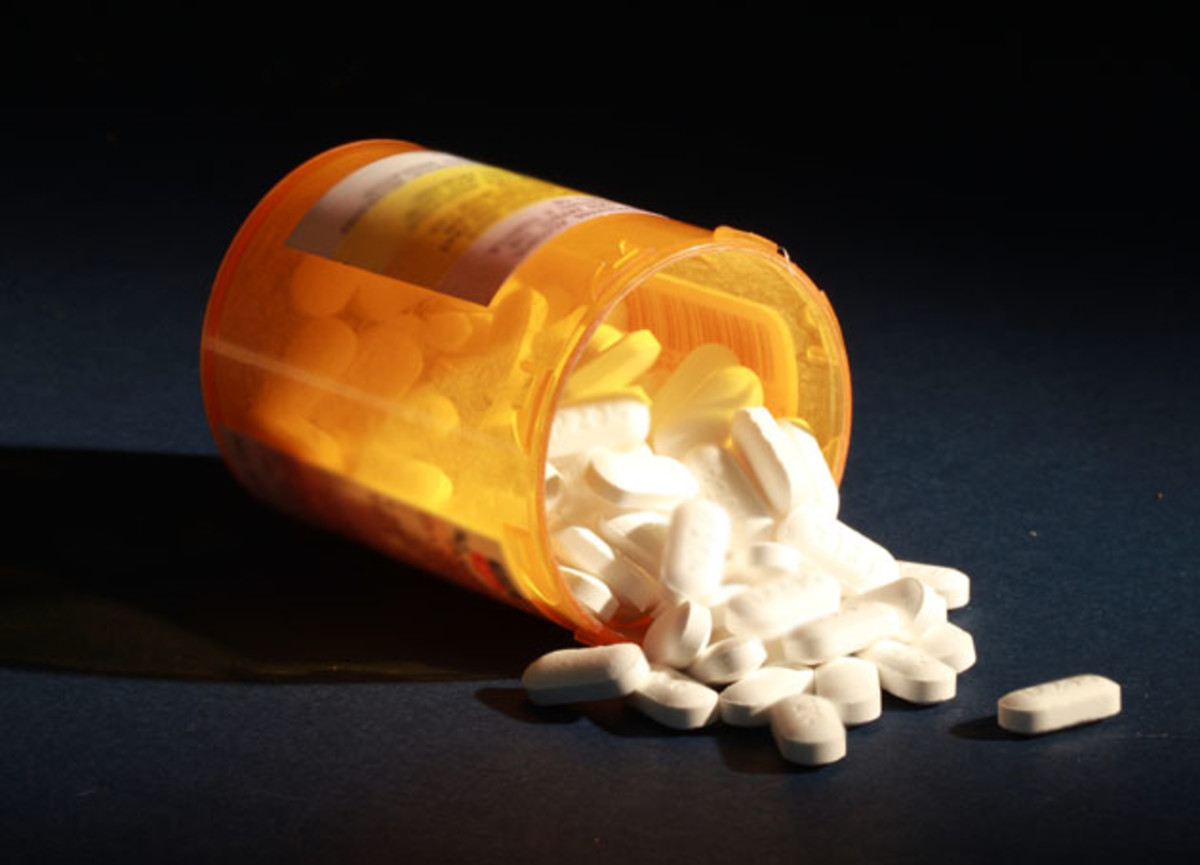
To understand the increasingly busy intersection of heroin and sports, it's essential first to understand the general path to the drug. According to the U.S. Substance Abuse and Mental Health Services Administration, a full 80% of all users arrive at heroin after abusing opioid painkillers such as OxyContin, Percocet and Vicodin. And according to the National Institute of Drug Abuse, one in 15 people who take nonmedical prescription painkillers will try heroin within the next 10 years. While opioid painkillers can cost up to $30 per pill on the black market, heroin, which is molecularly similar, can be purchased for $5 a bag and provides a more potent high. "It's an easy jump," says Harris Stratyner, a New York City addiction specialist.
Studies have shown that while cumulative pain levels remained constant among Americans, prescriptions for pain medications more than quadrupled between 1999 and 2010. As the sports industry expands each year—and the stakes on rinks, fields and courts grow higher—young athletes face enormous pressure to manage their pain and play through injuries.
A University of Michigan researcher uncovered a startling number in a 2013 national study: By the time high school athletes become seniors, approximately 11% will have used a narcotic pain reliever such as OxyContin or Vicodin—for nonmedical purposes. What's more, UM researcher Philip Todd Veliz, who conducted a 2013 longitudinal study of 743 male and 751 female adolescents in southeast Michigan that was published in the Journal of Adolescent Health, told SI that "male adolescent athletes who participated in competitive sports across the three-year study period had two times greater odds of being prescribed painkillers during the past year and had four times greater odds of medically misusing painkillers (i.e., using them to get high and using them too much) when compared to males who did not participate in competitive sports."
Moreover, "sports that involve high levels of contact (e.g., football) tend to socialize youth to view pain, violence and risk as normative features," Veliz said, and these "may influence risky behavior both on and off the playing field. In other words, participants in contact sports learn to view their body as an instrument that can be easily gambled with, even if it would involve permanent damage."
Consider Patrick Trevor. In the spring of 2009, Patrick was a sophomore lacrosse goalie at Rumson--Fair Haven, a well-regarded New Jersey high school with many students whose parents take ferries to jobs on Wall Street. A teammate's fluke shot in practice shattered Patrick's right thumb. He had two immediate concerns: easing the pain and getting back on the field. A future college scholarship, after all, was on the line. The doctor who examined Patrick prescribed Roxicodone (Roxy in the vernacular), a cousin of OxyContin.
Patrick quickly became addicted to the medication and even took to crushing and snorting his pills. But he reckoned that playing high was better than playing in pain—which was better than not playing at all. "Us athletes," he says, "we'll do anything in order to keep playing." Within a few years Patrick had made the transition to heroin. His Roxy prescription had lapsed; his fondness for the high had not. At first he illegally purchased pills from friends; then he ventured into the worst pockets of Newark to get his heroin fix. College lacrosse had become the least of his concerns.
Patrick was arrested and spent a short time in jail. He went to several rehab facilities before finding success at the Dynamite Youth Center in Brooklyn. He proudly says his clean date is Oct. 2, 2012. He was struck by how many athletes he saw at such a small facility. "Hockey, football, lacrosse," he says. "[Heroin is] a big thing in sports."
How big is difficult to say. "This should be on people's research agenda," Veliz says, lamenting the lack of reliable statistics. "Because this is actually happening."
More than a decade ago Amber Masters played soccer for Esperanza High in Anaheim despite a hyperextended right knee. ("I had to," she says. "We had college scouts there.") Colliding with another player, she tore tissue in the same knee. Surgery ended her season, and she became dependent on the opiate-based painkiller Norco.
When the prescription expired, she wanted to keep experiencing the feeling Norco gave her. A friend introduced her to Oxy. As Amber, once a gifted forward, chased a painkiller high, her soccer career imploded. Academic probation kept her off the team as a junior, and by the time she returned as a senior, she was not the same player. College recruiters disappeared. "I didn't really care," she says. "I had the party scene."
She first took heroin the summer before she enrolled at Orange Coast College in Costa Mesa, Calif. "I was addicted from the first hit I took," she says. Within a year she had dropped out of school, become a dealer ("I was my best customer," she says) and introduced her younger brother, Adam, to the drug. Amber became a mother. She eluded the law, but Adam was less fortunate. He went to jail for possession of narcotics. Then, on April 13, 2012, he died from an overdose. "That sent my addiction into a hard-core downward spiral," Amber says.
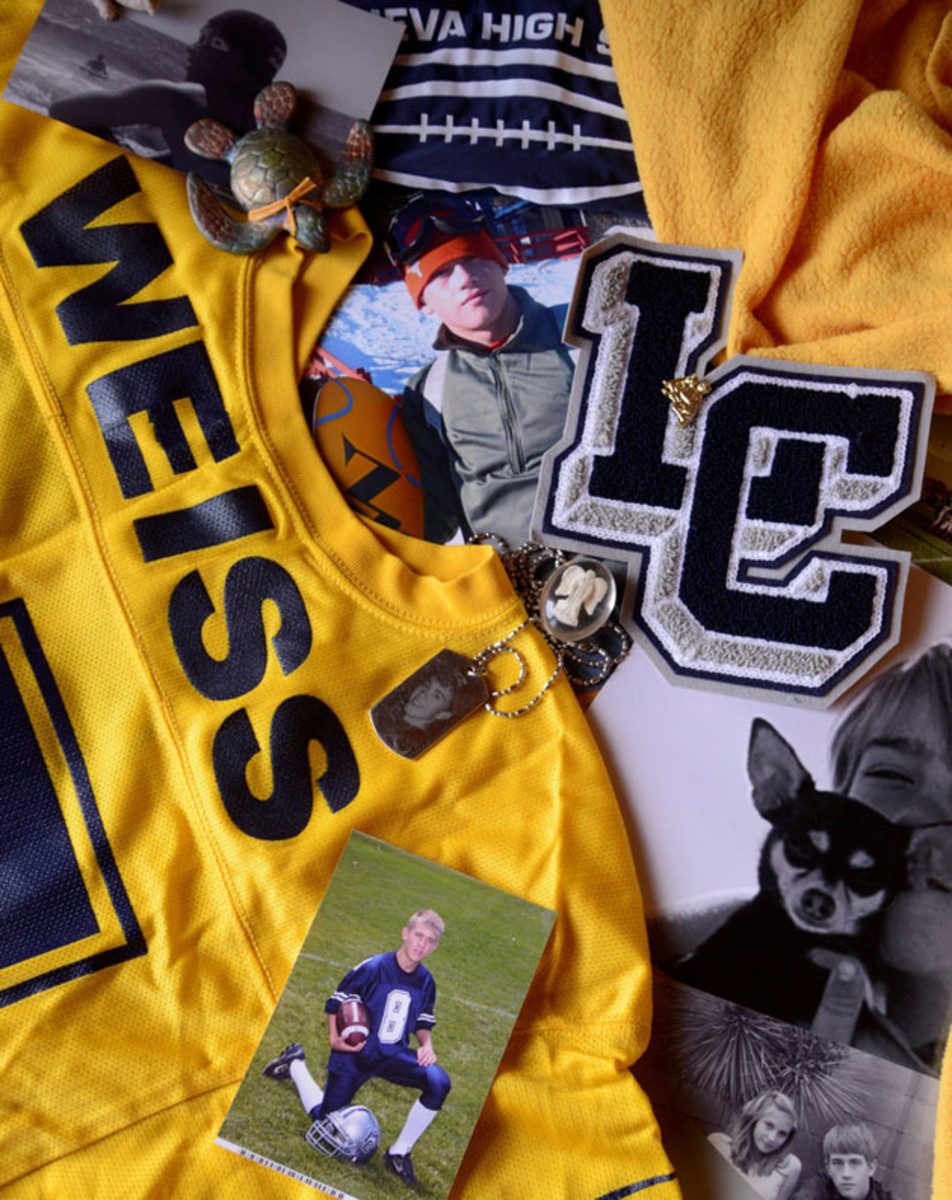
More trauma followed. Amber says her parents, Jerry and Ginger, sent her to rehab, kicked her out of the house when she relapsed, and refused to let her visit her daughter. (Ginger contends that she and Jerry set ground rules that Amber refused to obey. "She chose to leave," Ginger says.)
The separation was a sobering jolt to Amber. "I had a waking-up moment," she says. "I knew it was only a matter of time before I would die and leave my daughter behind." She entered rehab. Today she works in the billing department of an addiction recovery center in Irvine, Calif. She says she's been clean since Oct. 19, 2012.
It's disturbing enough that athletes such as Masters come to heroin through painkillers prescribed after an injury. But SI's reporting revealed a shocking contributing factor: Families consistently said that they received no warning from physicians about the addictive power of the opioid painkillers they prescribed. Patrick Trevor recalls that the doctor who prescribed Roxy for him jokingly said, "You got the good stuff." Trevor adds, "I didn't really put two and two together until later ... when I was a full-blown heroin addict. I knew painkillers were not good, but I didn't know how crazy addictive they were."
In 2014 the CDC issued a report headlined PHYSICIANS ARE FUELING PRESCRIPTION PAINKILLER OVERDOSES. The study found that doctors were engaging in "dangerous" and "inappropriate" prescription practices. "Anyone who is giving a kid an opioid prescription without serious oversight and supervision is out of their mind," says Joe Schrank, a New York City--based drug counselor and former USC offensive lineman. "That stuff is like kryptonite."
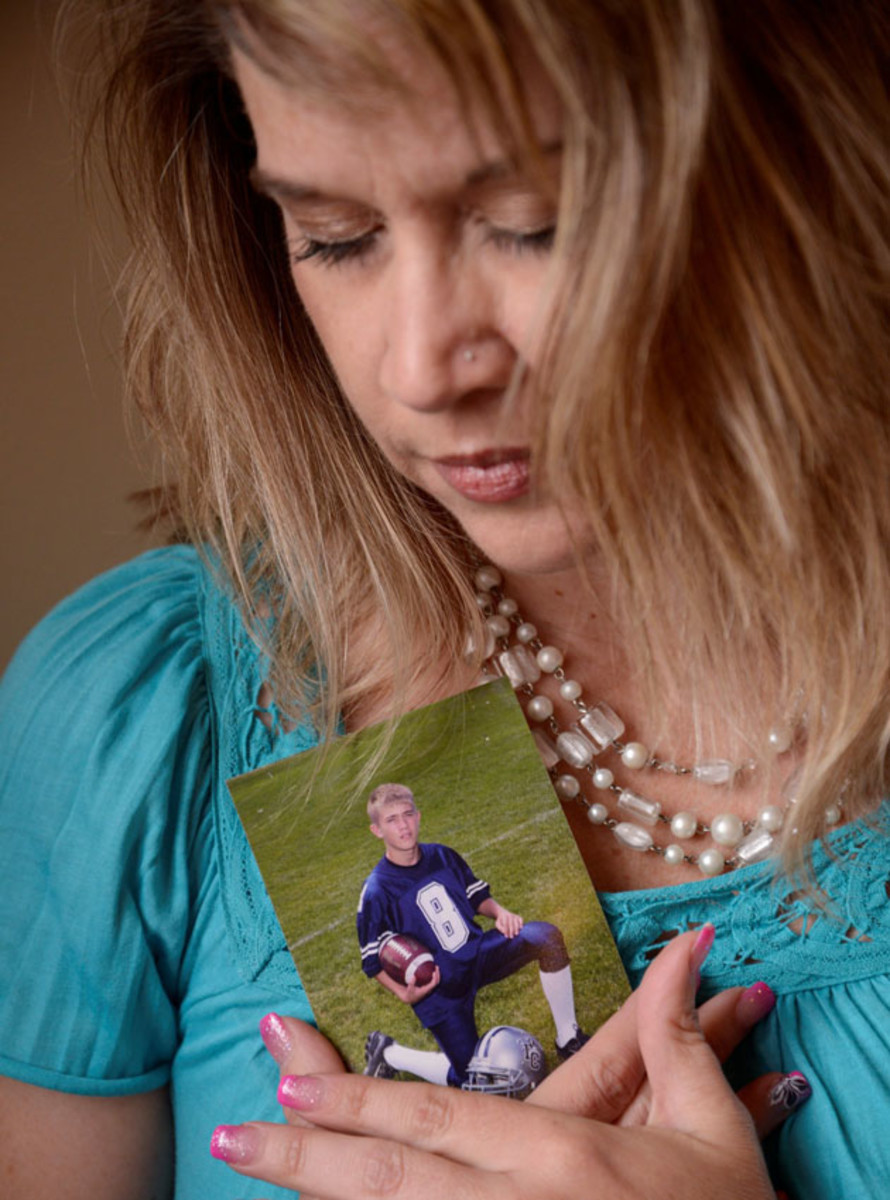
If there is an epicenter for the heroin-in-sports crisis, it's Albuquerque (pop. 550,000), a high-altitude city less than 300 miles from the Mexican border. A report by the New Mexico health department found that the drug-overdose death rate in the state jumped by more than 60% between 2001 and '10, and in New Mexico's Youth Risk and Resiliency survey one in 10 youths admitted to using opiate-based prescription drugs to get high. In Albuquerque at least eight athletes have died from heroin or painkiller overdoses since '11. (The very week in April that Sports Illustrated visited the city to report this story, a former local baseball star, James Diz, died of an apparent heroin overdose at 23.)
Cameron Weiss was a strapping wrestler and football special-teams player at La Cueva High. In 2010, his sophomore year, he broke his left collarbone making a tackle in practice and required surgery; months later he fractured his right collarbone while wrestling. He went on pain medication (Percocet and hydrocodone) and was soon ditching school and failing the AP classes he had been mastering. He confessed to his mother that he was addicted to heroin. Because of a federal law that prevents doctors from prescribing buprenorphine, a component of Suboxone, to more than 100 patients at a time, Jennifer Weiss-Burke had to call 80 physicians before she could get her son an appointment for a Suboxone prescription. On the drive to the doctor's, Cameron went into severe withdrawal. He was "combative, sweating, in a ton of pain," Jennifer says. "He was throwing up. He looked horrible."
Cameron's body had come to need the sustained opioid intake. Once he received the Suboxone, his withdrawal symptoms vanished. "After 15 minutes it was like he was normal again—laughing and happy," says his mother. But then she learned the reality of addiction: Sobriety can be fleeting. Soon her son was using again. "It was a living hell," she says. He died of a heroin overdose at 18.
Lou Duran can relate. She watched her son, Michael, make the varsity baseball team at Sandia Prep as an eighth-grader and, two years later, become addicted to OxyContin after he strained his knee playing soccer. Michael hardly fit the profile of an addict: He spent hours hitting balls in a batting cage with teammates. He excelled academically. Owing to his blend of intelligence and athleticism, Lou called him her "Einstein jock."
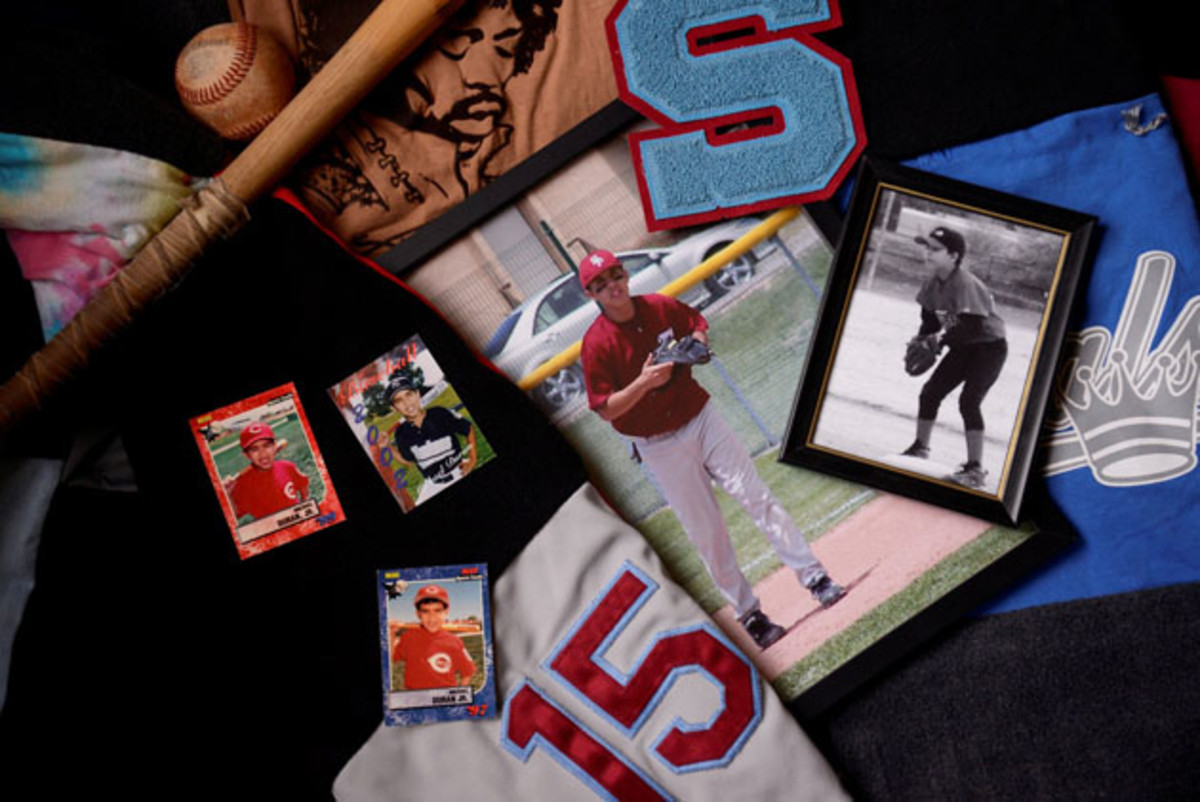
Because of his addiction, though, his baseball career unraveled. He was kicked out of private school, went to public school and then dropped out. After earning his GED, he went to San Diego City College, but he quickly transferred to New Mexico State in Las Cruces. Then he began using heroin. He went to rehab and attended therapy, only to relapse five times. Lou and her husband, Michael Sr., rode waves of terror followed by temporary relief. They witnessed their son's excruciating withdrawals and fleeting stretches of sobriety. Finally, in early 2011, Michael seemed to have broken free of the drug.
On Feb. 1, the evening of a historic winter snowstorm, a white Audi TT pulled up to the Durans' house in subzero temperatures. Michael, 19, gave the driver cash he had stolen from his mother's purse. The driver handed him a bag of heroin. From a distance Michael Sr. recognized trouble. "Get in the house now," he barked to his son. Turning to the driver, he said, "Get out of here while you still can." The Audi sped away.
Michael had been scheduled to deliver an antidrug speech that evening at Eldorado High. He was going to address a seminar for concerned family members and students organized by Healing Addiction in Our Community, telling them about his struggle with painkillers and heroin: how he had been a standout baseball player who took his first drug at 15; how he revived two friends who had overdosed; how he wound up in jail. The winter blast, though, closed roads and postponed the speech. When Michael went inside his house, he gave his parents a persuasive story: The guy in the car was a friend who had stopped by to check up on him. Michael went upstairs to his bedroom.
Lou remembers the silence when she knocked on Michael's door the next afternoon. She remembers kicking it open and scanning the room. Her eyes flashed across an unmade bed, an empty couch, a television turned on, and she was relieved. Then, as she turned to leave, she found Michael's body.
Later Michael Sr. discovered notes from the antidrug speech his son was supposed to have given. One of the bullet points: Lucky to be here today at all because I've cheated death more times than I can count.
When her son became an addict in 2010, Jennifer Weiss-Burke began an awareness and advocacy group for relatives and friends of drug-dependent children. The group—Healing Addiction in Our Community, which Michael Duran was to have addressed the night he died—has grown to 50 members. It includes several families of young athletes who have overdosed on opioids. Weiss-Burke is also cofounder and executive director of Serenity Mesa, a long-term treatment center for young people in recovery from drug and alcohol addiction, which opened on May 26.
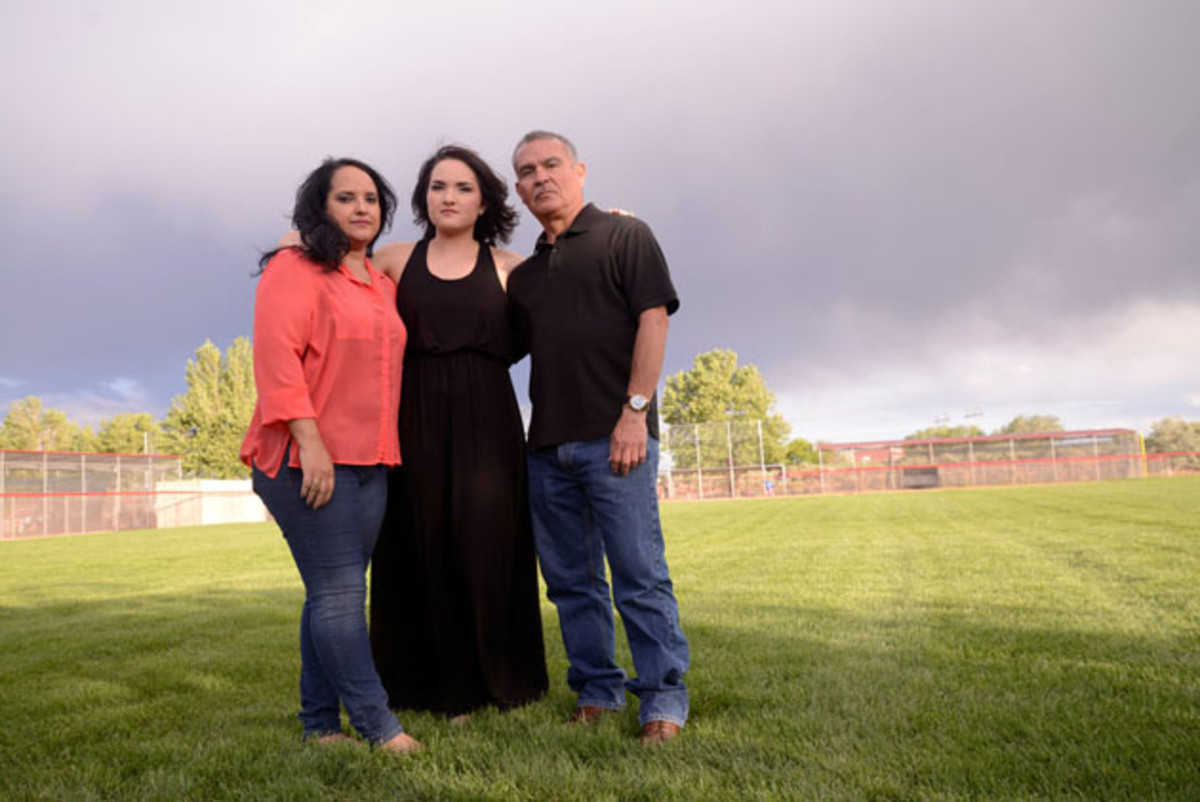
Nearby, the Durans continue to grieve. After her son died, Lou went through his text messages, found his dealer's phone number and tracked down his address. She gave the information to the DEA and FBI. "A week later," she says, "he was arrested." Lou now works at Turning Point Recovery Center, a local treatment facility.
On Albuquerque's northeast side, the Montanos' business, the Wheel Align It II body shop, doubles as a shrine to Roman. The office walls are covered with photos of him on the mound, standing next to UFC fighters, alongside Ken Giles. Giles learned of Roman's death while in the minors—"I lost it for a good week," he says—and now has the letters RM written with permanent marker on each of his major league gloves.
Bo Montano, a former wrestler who still carries himself like an athlete, has an elaborate tattoo on his right forearm in which Roman's initials are framed by the words SO OTHERS MAY LIVE. Like the Durans and Jennifer Weiss-Burke, Bo and JoAnn Montano honor their deceased son by involving themselves in drug treatment and prevention. Through churches and schools around Albuquerque, they lead a 12-step recovery program for addicts and alcoholics and introduce them to sponsors. The Montanos also make a point of hiring recovering addicts at the body shop. "It helps us more than it helps them," says Bo. "It gives us some peace."
Sitting on stools inside the shop this spring, the Montanos recounted these successes. But they stopped short of telling a story that's too tidy. Their saga, finally, is a contemporary tragedy. They replayed the final few years of their son's life, wondering what subtle signs or symptoms they missed. "[Roman] was fighting the best he could, but the drug had control," said Bo. "If things are going great, you use [heroin] to celebrate. If things are going bad, you use it to numb."
JoAnn, blinking back tears, said, "You know what really breaks my heart? My son knew he was meant to be an athlete. Sports was his first addiction. He just ran into another addiction that was so much more powerful."
